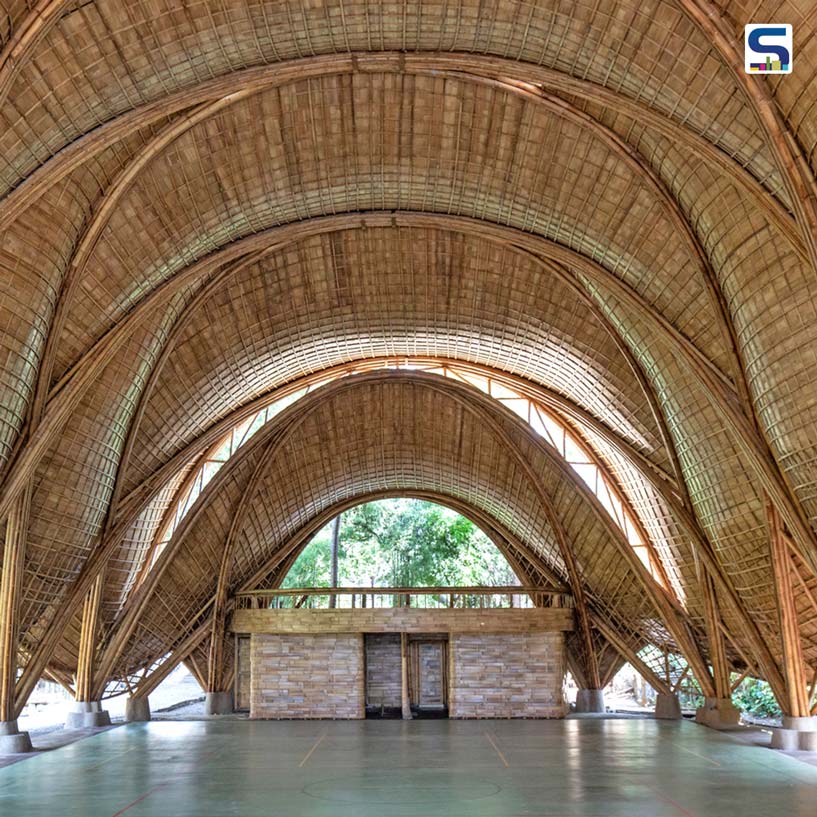
Bamboo is slowly replacing plywood as a flooring option. The day is not far when bamboo overtakes all other materials as a construction raw material. One of the biggest advantages is that bamboo can be extracted without harming the tree. The bamboo tree can grow back quickly and regenerates faster than all other plants. Growing Bamboo generally comes with a positive environmental balance. In the last five years, the incidences of bamboo replacing natural forests is very small. There are plenty of uses for Bamboo in construction, including Bamboo Roofing, Bamboo walls, Scaffolding, and Bamboo Trusses. Surfaces Reporter(SR) takes a deeper look at bamboo and its Dos and don't in construction.
Also Read: Local Bamboo and Recycled Plastic Coalesce to form this Residence, Workshop and Studio | Piyandeling
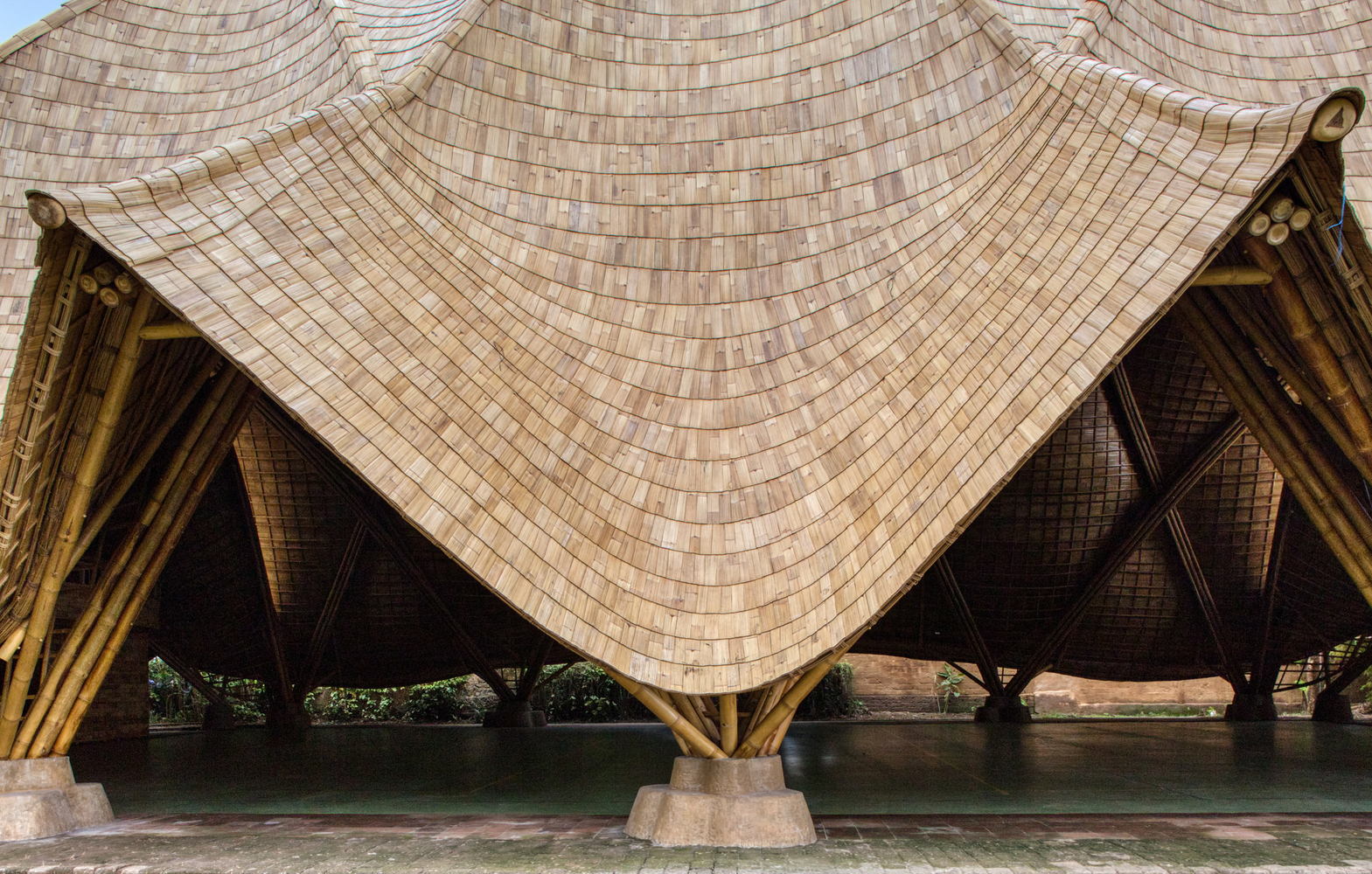 How bamboo is being used in construction
How bamboo is being used in construction
Here are some magical projects that utilize Bamboo as the main construction material.
Kontum Indochine Cafe, Vietnam by Vo Trong Nghia Architects
This Cafe is situated in a hotel in central Vietnam and has a water-facing view. The roof is supported by fifteen conical bamboo columns. The cafe follows the shapes of Vietnamese fishing baskets.
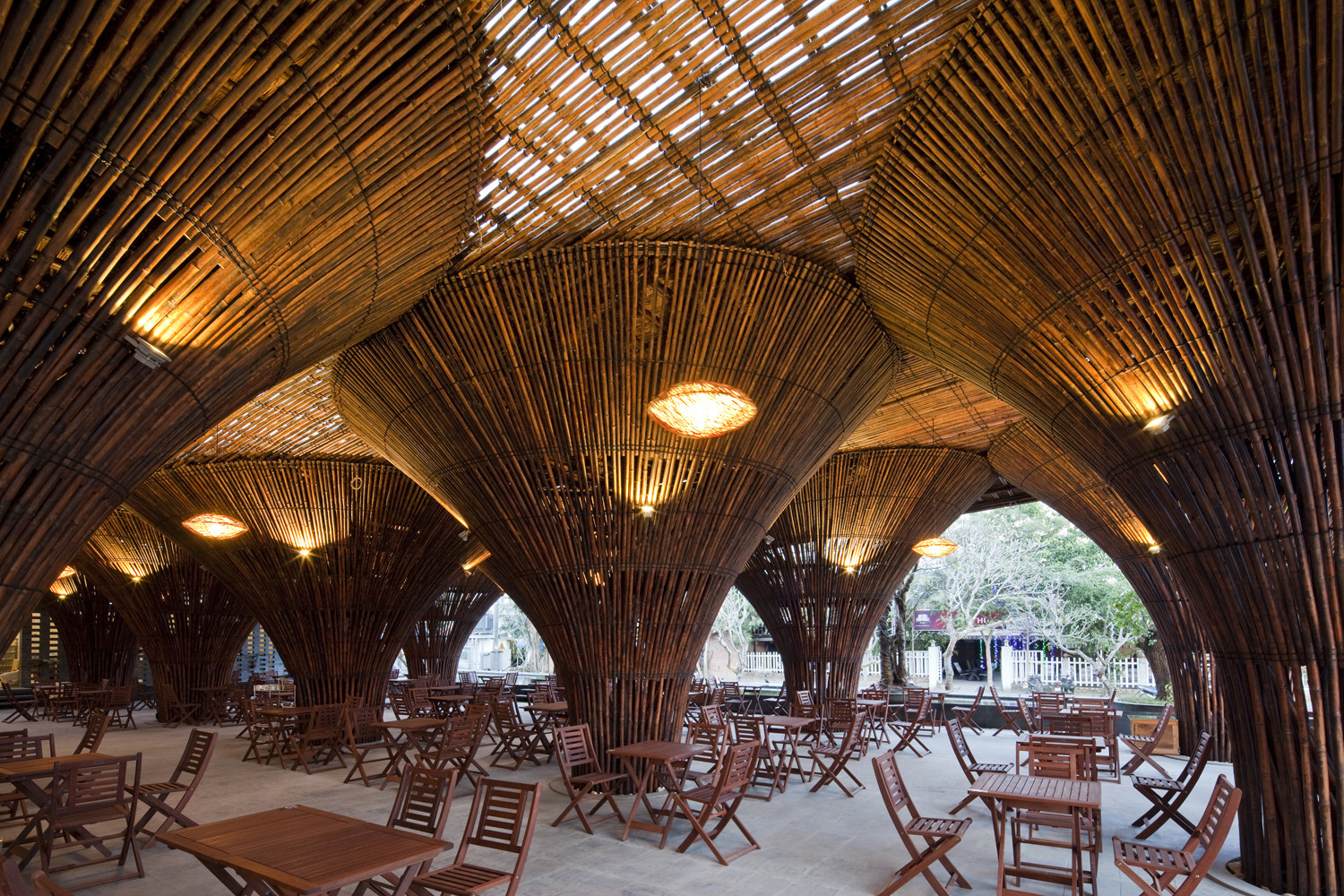 The bamboo forms a grid between the tables of the open-air dining room that functions as a restaurant for the Kontum Indochine hotel. The roof contains bamboo as well as layers of thatch and fiber-reinforced plastic. The cafe is well lit with natural light owing to the canopy structure.
The bamboo forms a grid between the tables of the open-air dining room that functions as a restaurant for the Kontum Indochine hotel. The roof contains bamboo as well as layers of thatch and fiber-reinforced plastic. The cafe is well lit with natural light owing to the canopy structure.
The Arc, Bali by Ibuku
The structure is a human ribcage-like structure that is held in place by the tension by creating a self-supporting roof made entirely from bamboo. It is built for the gymnasium of Bali's Green School.
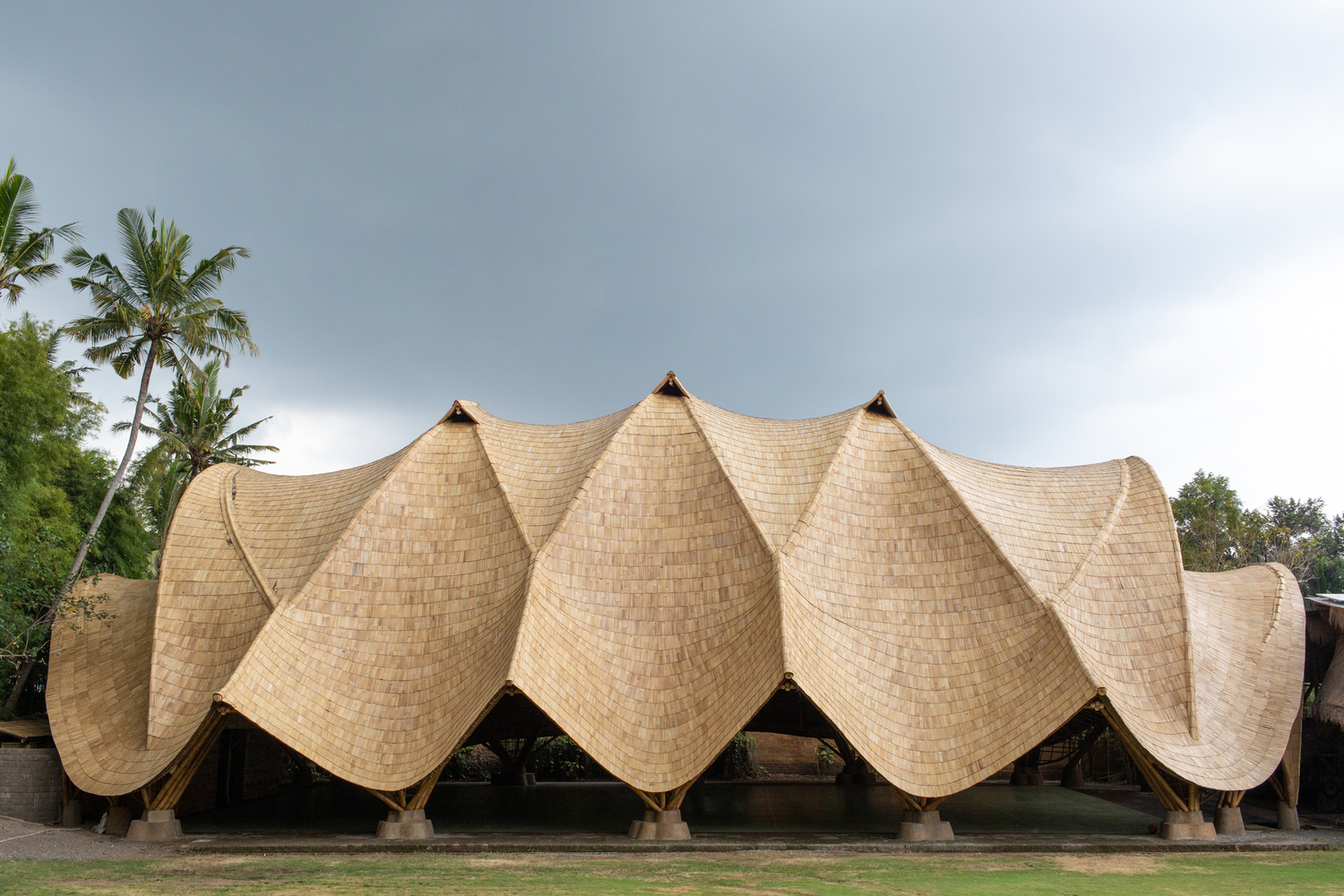 The structure is composed of 14-meter-high cane arches connected by double-curved gridshells. The lightweight structure with the double roof is composed of bamboo entirely.
The structure is composed of 14-meter-high cane arches connected by double-curved gridshells. The lightweight structure with the double roof is composed of bamboo entirely.
Wind Bar,Vietnam by Vo Trong Nghia,
This unique thatched bamboo dome is located at the center of a lake in Binh Duong Province. For this dome, a structural bamboo arch system was designed which is 10m high and spans 15m across.
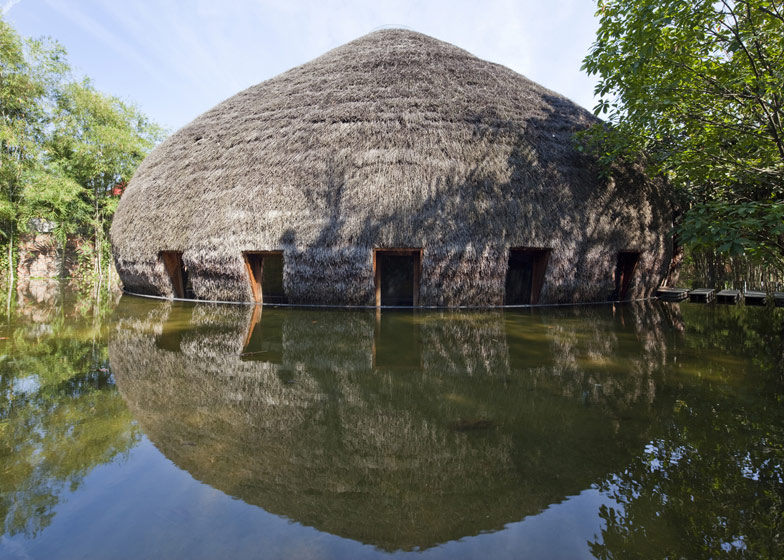 The mainframe contains several bamboo elements bound together. These are 48 prefabricated units. The building utilizes natural wind energy which keeps it well ventilated.
The mainframe contains several bamboo elements bound together. These are 48 prefabricated units. The building utilizes natural wind energy which keeps it well ventilated.
Is bamboo the perfect construction material?
Although it is understood that Bamboo is an important resource for a sustainable architectural future, there are a few misconceptions. A lot of the commonly known advantages of Bamboo are factually incorrect. It is also hugely impacted by climatic conditions. It proves to be an ideal option only for humid conditions. In acrid regions, the utility is limited. Bamboo is indeed easy to cut, handle and repair. It can shrink easily in acrid environments leading to distortion of the structure.
 Bamboo grows in many varieties roughly around 1700 bamboo species exist on the planet. Out of this, only a handful of them can be used for construction. These species are not as readily available as we are made to believe. All of these species have their own structural and mechanical properties. They grow up to disparate heights, which means not every species can be used easily. Another myth is that Bamboo is naturally resistant to biological degrading organisms. Since it contains high levels of starch, it can attract insects such as termites and powder post beetles. It is only posted proper treatment that it can resist the pests.
Bamboo grows in many varieties roughly around 1700 bamboo species exist on the planet. Out of this, only a handful of them can be used for construction. These species are not as readily available as we are made to believe. All of these species have their own structural and mechanical properties. They grow up to disparate heights, which means not every species can be used easily. Another myth is that Bamboo is naturally resistant to biological degrading organisms. Since it contains high levels of starch, it can attract insects such as termites and powder post beetles. It is only posted proper treatment that it can resist the pests.
Does this mean Bamboo should not be used?
Bamboo has several advantages that make it fit for construction in several aspects. One of the topmost reasons is that it does not produce any waste. It does not cause any pollution, as all the parts can be used as fertilizers or processed to be used as bamboo charcoal. Bamboo saves a lot of time and inventory as it is lightweight which makes it easy to store and transport. Bamboo is a natural earthquake-resistant material owing to the transverse wall in its nodes. These walls maintain strength and allow bending thus preventing rupturing when bent. If you like natural settings, Bamboo is the ideal choice. This is because it does not require any polishing or painting and can be used as it is.
Conclusion
Bamboo is an appropriate choice for humid regions or for reinforcing materials for foundations. Yet it has its limitations which cannot be overlooked as stated above.
Keep reading SURFACES REPORTER for more such articles and stories.
Join us in SOCIAL MEDIA to stay updated
SR FACEBOOK | SR LINKEDIN | SR INSTAGRAM | SR YOUTUBE
Further, Subscribe to our magazine | Sign Up for the FREE
Surfaces Reporter Magazine Newsletter
Also, check out Surfaces Reporter’s encouraging, exciting and educational WEBINARS here.
You may also like to read about:
Worlds Largest Cantilevers Tower in Dubai | Nikken Sekkei
Mass-Timber Sustainability Resource Center In California | Yazdani Studio
Schmidt Hammer Lassen Reveals Design For Worlds Tallest Timber Tower | Switzerland
And more…